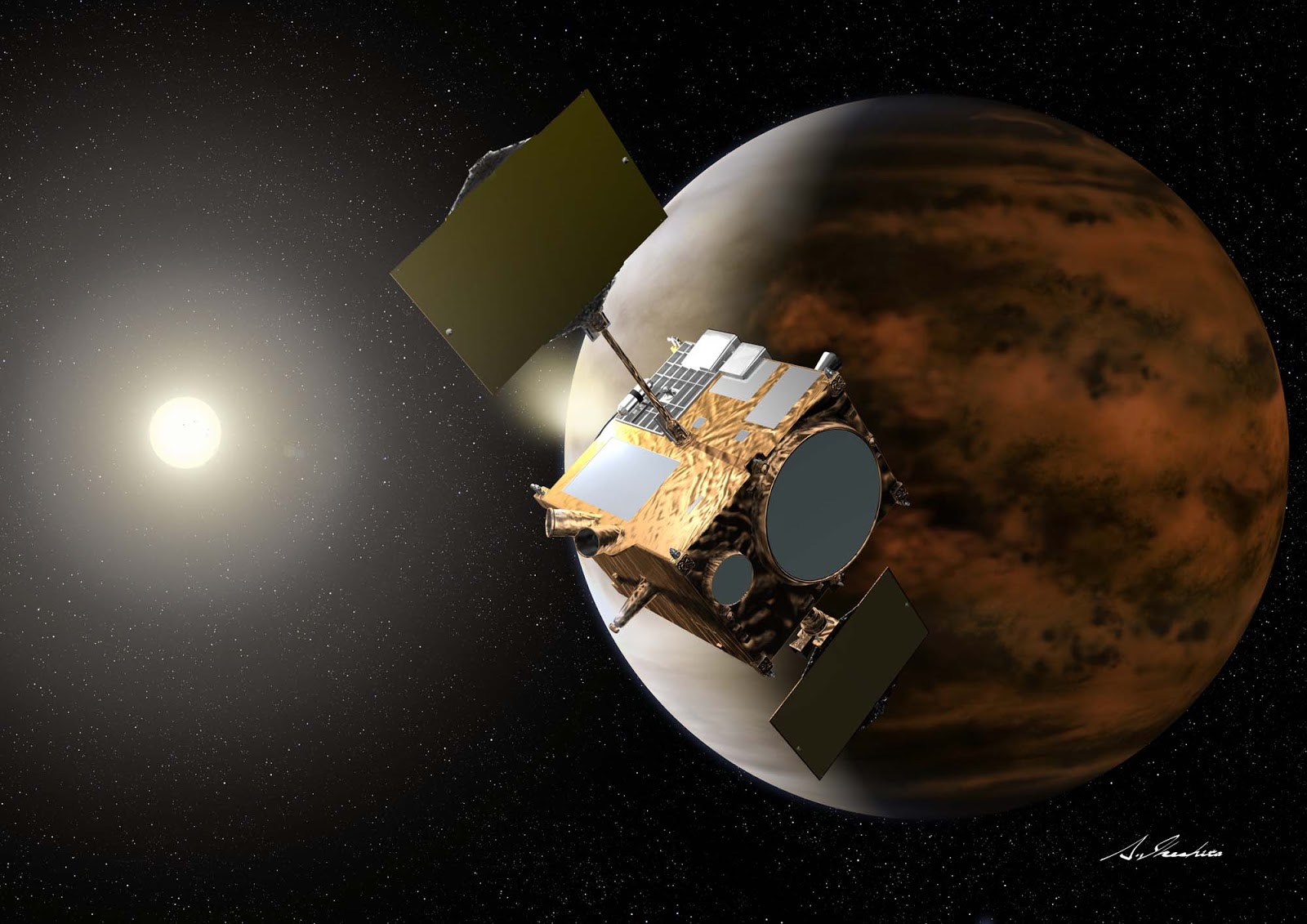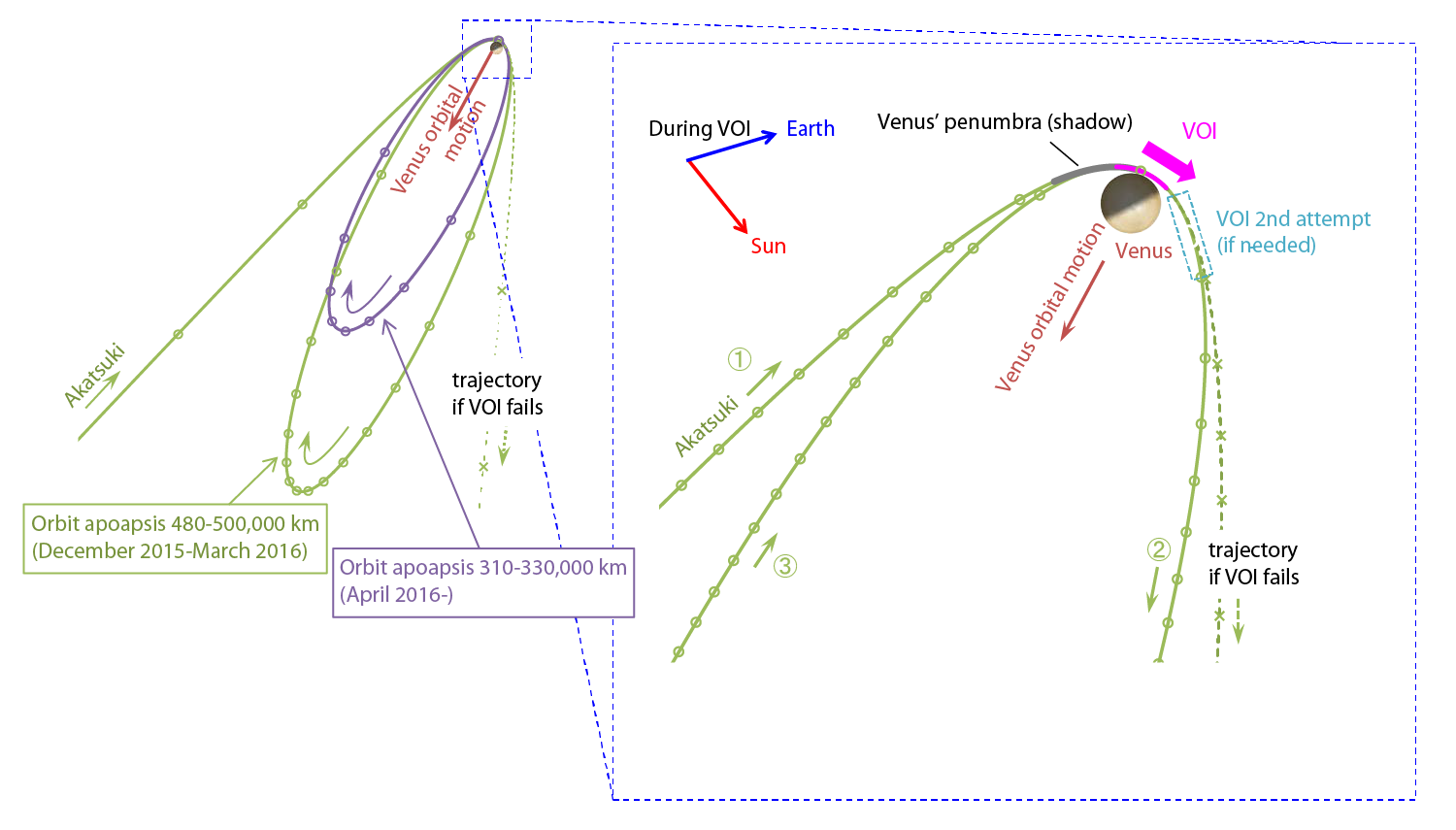-
Posts
1,091 -
Joined
-
Last visited
Content Type
Profiles
Forums
Developer Articles
KSP2 Release Notes
Bug Reports
Status Updates posted by Frida Space
-
Ten days ago, Akatsuki marked its first Venusian year since Venus Orbit Insertion. To celebrate, JAXA published 7 new portraits by Akatsuki.

Left column
Top photo
Camera: IR1 - Wavelength: 1.01 micrometres - Date Taken: 21/1 - Distance: 38'000 km - Description: Map of the heat coming from the ground (rocks, vulcanos...). The darker region is Aphrodite Terra.
Middle photo
Camera: IR1 - Wavelength: 0.9 micrometers - Date Taken: 7/5 - Distance: 65'000 km - Description: The sunlit face of Venus.
Bottom photo
Camera: LIR - Wavelength: 10 micrometers - Date Taken: 15/4 - Distance: 63'000 km - Description: Map of the heat coming from the cloudtops. Over the south pole, the temperatures are much higher, hence brighter colour.
Middle column
Top photo
Camera: UVI - Wavelength: 283 nanometres - Date Taken: 25/4 - Distance: 108'000 km - Description: Image centred at an absorption line of sulfur dioxide, a precursor to sulfuric acid.
Middle photo
Camera: UVI - Wavelength: 365 nanometres - Date Taken: 7/5 - Distance: 80'000 km - Description: The image's high natural contrast reveals the structure and the dynamics of the atmosphere.
Bottom photo
Camera: IR2 - Wavelength: 2.02 micrometres - Date Taken: 7/5 - Distance: 81'000 km - Description: The distribution of carbon dioxide, the main gas within Venus' atmosphere. The cloudtops over the polar regions are quite low in altitude, hence they appear darker.
Right column (big photo)
Camera: IR2 - Wavelength: 2.26 micrometers - Date Taken: ?/4 - Distance: 76'000 km - Description: Venus' nightside. The map shows the heat coming from the lower reaches of the atmosphere, just above the surface
-
Great news: first science from Akatsuki! The probe is currently busy lowering its apoapsis to 310,000 km and is scheduled to begin regular observations in mid-April, but some science has already arrived back to Earth and it is definitely tantalizing.
On Dec. 7th, the LIR camera (mid-infrared, 10 micrometres) observed a mysterious bow-shaped structure in the high altitude clouds, spanning both hemispheres. The structure was still visible in images taken 4 days laters. "No similar structure has ever been observed," said Japanese scientists.
On March 4th (and then again on March 25th), the USO experiment observed a radio occultation, meaning Akatsuki passed behind Venus' disk as seen from Earth. Just before disappearing and immediately after reappearing on the other side of the planet, the instrument sent radio waves back to Earth. The waves were filtered through the planet's atmosphere, enabling scientists to reconstruct the temperature profile. The graph is on the right side of the image above, with altitude in km on the y-axis and temperature in K on the x-axis. The blue line represents the data collected at entry, while the red line represents the data collected at egress. The graph on the left is a frequency change graph.
The IR1 camera (1 micrometer) observed the highlands of Aphrodite Terra (the darker regions in the image above) during nighttime. The image was obtained on January 21st from 44,000 km away.
On December 9th, the UVI camera (293-365 nanometers) observed Venus three times, with two hours between each image (14:10 - 16:10 - 18:10 UTC). The image allows scientists to measure the winds speed. The spatial resolution is 70 km per pixel.
Seeing these images, I'm so glad Akatsuki managed to reach Venus (and stay, this time). Lacking a Venus orbiter for so long would have been terrible for science!
-

Japan's Akatsuki spacecraft is visiting Venus for the second time -- this time to stay, hopefully.
The JAXA spacecraft had failed orbital insertion in 2010, with its main engine prematurely shutting down less than 3 minutes into a 12 minute burn due to a salt formation. On December 7, Akatsuki will attempt a second orbital insertion manoeuvre, a 20 minute, 33 second burn that will be carried out by the spacecraft's 20 N, RCS thrusters. The thrusters have already been tested for 10-minute burns, which is still way beyond the very short angular-moment-dumping manoeuvres they were designed for. However, on a positive note, the engineers have managed to make the spacecraft a bit lighter by dumping 65 kilos of propellant from the main engine tank.
During its 5-year unplanned heliocentric cruise, Akatsuki has almost always been inside Venus' orbit, exsposing itself to temperature and radiation conditions 37% worse than those planned. The probe reached its last perihelion in August and is now getting further away from the Sun.
Also, even if Akatsuki succeeds in this second orbital insertion attempt, it will be on a not-so-scientifically-rewarding orbit, at least compared to the original orbit it was designed to reach. The new orbit will have a period of 15 days, instead of the 30-hour-orbit engineers and scientists originally hoped for. A manoeuvre scheduled for March should lower the orbital period to around 9 days.
Despite everything, there are some good signs: three of Akatsuki's five camers have recently been turned on for the first time in more than four years and everything seems fine with them. The other two will be activated only after the orbital insertion burn.
The orbital insertion burn is slated to start 541 km above Venus' surface.
-
 8 hours to orbital insertion!
8 hours to orbital insertion!
A timeline from Emily Lakdawalla:
- Dec 7 04:30 JST / Dec 6 19:30 UT / Dec 6 11:30 PST: Usuda Deep Space Center begins tracking Akatsuki.
- Dec 7 08:22 JST / Dec 6 23:22 UT / Dec 6 15:22 PST: Akatsuki enters Venus' penumbra.
- Dec 7 08:51 JST / Dec 6 23:51 UT / Dec 6 15:51 PST: Akatsuki fires one set of RCS thrusters for 20 minutes, 33 seconds to enter Venus orbit. After the firing, Akatsuki will automatically rotate to prepare for a second attempt at orbit insertion with its opposite set of RCS thrusters. Akatsuki will wait for instruction from Earth to find out if the second attempt is needed.
- Dec 7 12:00 JST / Dec 7 03:00 UT / Dec 6 19:00 PST: JAXA will hold a press briefing from Sagamihara. At the press briefing, they will only be able to say whether or not the attitude control system functioned as commanded. It will take until December 9 to confirm that the spacecraft successfully entered Venus orbit. Another press briefing is scheduled for that day.
- December 7, afternoon (Japan time): Canberra Deep Space Network begins tracking Akatsuki.
This website looks like it will be hosting a live webcast of the event.
Fingers crossed... go Akatsuki!
-


